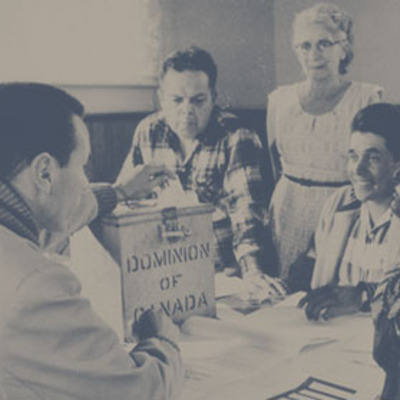- Women in the DCB/DBC
- Winning the Right to Vote
- Introduction
- Women Voting before 1851
- Coming Together to Demand the Vote
- The Right to Vote and Women’s Demands
- Relations with Militants and Organizations in Other Countries
- The Right to Vote in Municipal Elections
- The Right to Vote in Provincial and Territorial Elections
- The Right to Vote in Federal Elections
- Indigenous Women’s Right to Vote
- Opposition, Indifference, and Doubt
- Suggested Reading
Indigenous Women’s Right to Vote

Source: Link
“In 1960 …, parliament extended the federal franchise to Canada's aboriginal population.”
Indigenous women who were status Indians acquired the right to vote in provincial and federal elections later than non-Indigenous women. As is noted in the biography of John George DIEFENBAKER, prime minister from 1957 to 1963, it was only in March 1960 that men and women with Indian status became eligible to vote in federal elections without having to renounce their status or certain rights attached to their status. They were first able to exercise their new right from 31 October that year in a by-election held in Ontario.





